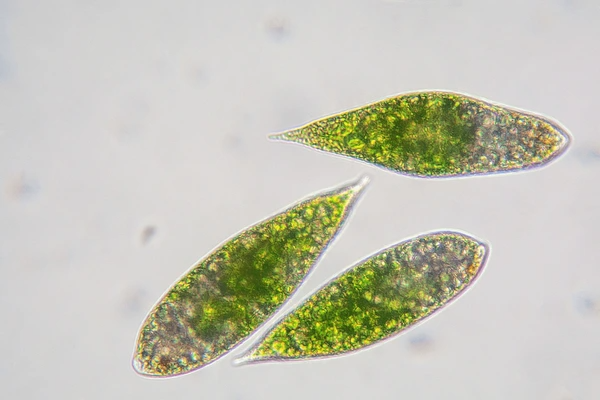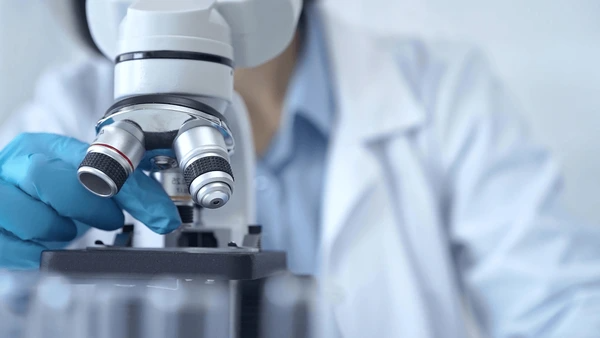
Introduction
When exploring the foundations of life, understanding the distinction between eukaryotic vs. prokaryotic cells is essential. These two cell types represent the primary categories of life on Earth, each with unique structures and functions. Eukaryotic cells, found in plants, animals, fungi, and protists, contain a true nucleus and complex organelles that enable specialized functions. In contrast, prokaryotic cells, exemplified by bacteria and archaea, lack a defined nucleus and are typically simpler but highly adaptable. By examining their differences, we gain insight into how life evolved and thrives in diverse environments, from single-celled organisms to complex multicellular beings.

Definition of Eukaryotic Cells
Eukaryotic cells are complex, membrane-bound structures that contain a nucleus and various organelles, such as mitochondria, endoplasmic reticulum, Golgi apparatus, and lysosomes. They are typically larger and more elaborate than prokaryotic cells. Eukaryotic cells can exist as single-celled organisms (e.g., amoebae, yeasts) or as part of multicellular organisms (e.g., plants, animals, fungi).
Definition of Prokaryotic Cells
Prokaryotic cells are simpler and smaller than eukaryotic cells, lacking a membrane-bound nucleus and organelles. They are unicellular organisms, such as bacteria and archaea. Prokaryotic cells have a single circular chromosome, ribosomes, and a cell wall composed of peptidoglycan (in bacteria) or other materials (in archaea).
Eukaryotic vs. Prokaryotic: Key Differences
Cellular Structure
Eukaryotic cells are more complex and larger than prokaryotic cells. A key distinction is the presence of a membrane-bound nucleus and organelles in eukaryotes, which are absent in prokaryotes. Eukaryotic cells contain various membrane-bound organelles like mitochondria, endoplasmic reticulum, Golgi apparatus, lysosomes, and others, each with specialized functions. Prokaryotic cells lack these membrane-bound compartments and have a simpler structure.
Genetic Material
Eukaryotic cells have linear chromosomes containing DNA enclosed within a nucleus, while prokaryotic cells have a single circular DNA molecule without a true nucleus. Eukaryotic genes often contain non-coding regions (introns), which are absent in prokaryotes. Eukaryotes also have additional genetic material in organelles like mitochondria and chloroplasts.
Protein Synthesis
Eukaryotic cells have a more complex process of protein synthesis, involving ribosomes in the cytoplasm and endoplasmic reticulum. Prokaryotic protein synthesis occurs in the cytoplasm on smaller 70S ribosomes. Eukaryotes also have additional mechanisms like mRNA capping, polyadenylation, and splicing.
Cell Division
Eukaryotic cells undergo mitosis (or meiosis in reproductive cells), involving complex mechanisms like the formation of spindle fibers and breakdown of the nuclear envelope. Prokaryotic cells divide by binary fission, a simpler process without the involvement of a nucleus.
Evolutionary Implications
The presence of membrane-bound organelles in eukaryotes is believed to have originated from endosymbiotic events, where prokaryotic cells were engulfed by other cells, leading to the evolution of mitochondria and chloroplasts. This endosymbiotic theory explains the increased complexity and compartmentalization in eukaryotic cells, enabling more specialized functions and energy production.
Common Features Shared by Both Cell Types
Both eukaryotic and prokaryotic cells share some common features, including:
- Cytoplasm: The gel-like substance containing organelles and other cellular components.
- Cell membrane: A phospholipid bilayer that separates the cell from its environment.
- Ribosomes: Organelles responsible for protein synthesis.
- DNA: The genetic material that carries hereditary information.

Functions of Eukaryotic Cells
Eukaryotic cells are highly compartmentalized, containing membrane-bound organelles that perform specialized functions essential for cellular processes. The nucleus houses the genetic material and regulates gene expression, while the mitochondria generate energy through cellular respiration. The endoplasmic reticulum (ER) is involved in protein synthesis, folding, and transport, with the rough ER studded with ribosomes for translation and the smooth ER responsible for lipid synthesis. The Golgi apparatus modifies, sorts, and packages proteins and lipids for secretion or distribution within the cell. Lysosomes contain digestive enzymes for breaking down macromolecules and cellular debris. The cytoskeleton, comprising microtubules and microfilaments, facilitates intracellular transport and maintains cell shape and motility.
Functions of Prokaryotic Cells
Prokaryotic cells, such as bacteria and archaea, lack membrane-bound organelles but possess specialized structures that carry out essential cellular functions.The cell membrane regulates the entry and exit of substances, while the cell wall provides structural support and protection. Ribosomes, either free in the cytoplasm or attached to the cell membrane, are responsible for protein synthesis. Prokaryotes may contain plasmids, which are small circular DNA molecules that carry additional genetic information. Some bacteria have flagella for locomotion, pili for attachment, and specialized structures like endospores for survival in harsh environments. Photosynthetic prokaryotes, such as cyanobacteria, possess thylakoid membranes containing photosynthetic pigments for capturing light energy.
Eukaryotic vs. Prokaryotic: Importance in Science and Medicine
- Understanding Cellular Processes: Studying the unique features and functions of eukaryotic cells has led to insights into fundamental cellular processes, such as cell division, gene regulation, and metabolic pathways, which are crucial for understanding diseases and developing treatments.
- Biomedical Research: Eukaryotic cell lines and model organisms (e.g., yeast, fruit flies, mice) are extensively used in biomedical research to study human diseases, test potential drugs, and develop therapeutic strategies.
- Biotechnology Applications: Eukaryotic cells, particularly those from plants and animals, are widely employed in biotechnology for the production of valuable proteins, enzymes, and other biomolecules, as well as in genetic engineering and cell-based therapies.
Eukaryotic vs. Prokaryotic: Examples and Applications
The differences between eukaryotic and prokaryotic cells have significant implications in science and medicine. In biomedical research, eukaryotic cell lines are widely used for studying cellular processes, disease mechanisms, and drug screening. 6 Prokaryotic cells, particularly bacteria, are invaluable in biotechnology for the production of enzymes, antibiotics, and other valuable compounds.
In medicine, understanding the differences between eukaryotic and prokaryotic cells is crucial for developing effective treatments for infectious diseases caused by bacteria and viruses, which often target specific cellular components or processes. Additionally, eukaryotic stem cells hold great promise in regenerative medicine for treating various conditions by replacing damaged or diseased cells.

Eukaryotic vs. Prokaryotic: Evolutionary Perspective
The emergence of eukaryotic cells from prokaryotic ancestors is considered a major evolutionary transition, marking a significant increase in cellular complexity. Several hypotheses have been proposed to explain this transition, including the endosymbiotic theory, which suggests that eukaryotic cells arose from the engulfment of an alpha-proteobacterium by an archaeal host cell, leading to the formation of mitochondria. This event, along with the acquisition of other cellular components through horizontal gene transfer and symbiogenesis, is believed to have played a crucial role in the evolution of eukaryotic cellular complexity.
FAQ
What is the main difference between eukaryotic and prokaryotic cells?
- Eukaryotic cells have a true nucleus and membrane-bound organelles, while prokaryotic cells lack these structures.
Which organisms have eukaryotic cells?
- Animals, plants, fungi, and protists have eukaryotic cells.
Do prokaryotic cells have DNA?
- Yes, prokaryotic cells have DNA, but it is not contained within a nucleus.
Can eukaryotic cells be single-celled?
- Yes, some eukaryotes, like yeast and certain algae, are single-celled.
Why are prokaryotic cells important?
- Prokaryotic cells play essential roles in ecosystems, health, and biotechnology, including nutrient cycling and disease-causing bacteria.
To get detailed scientific explanations of Eukaryotic vs. Prokaryotic, try Patsnap Eureka.

